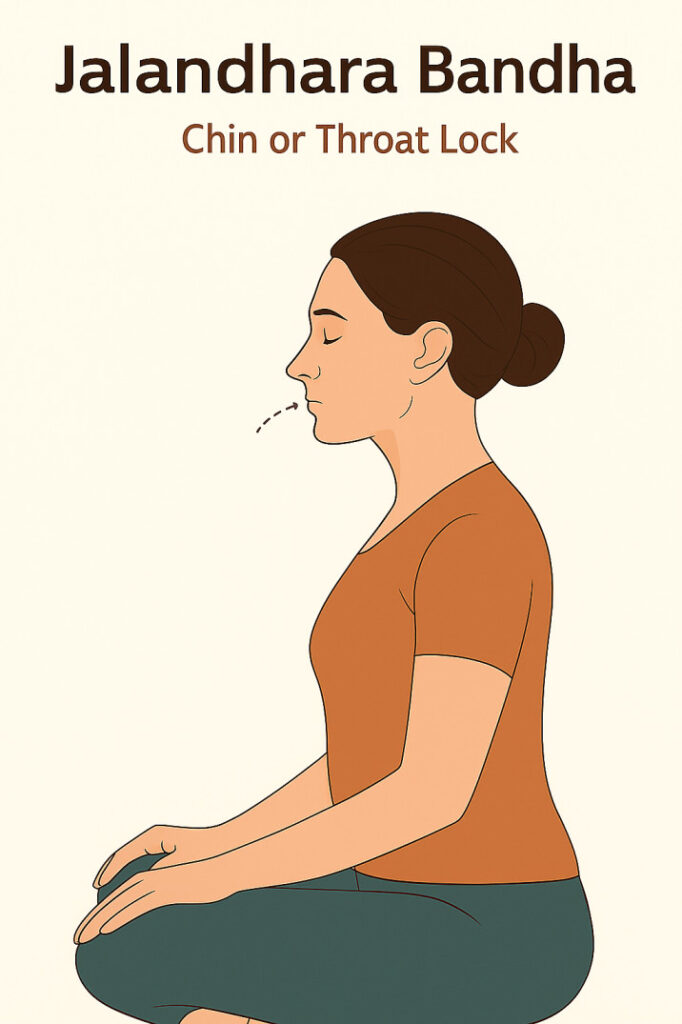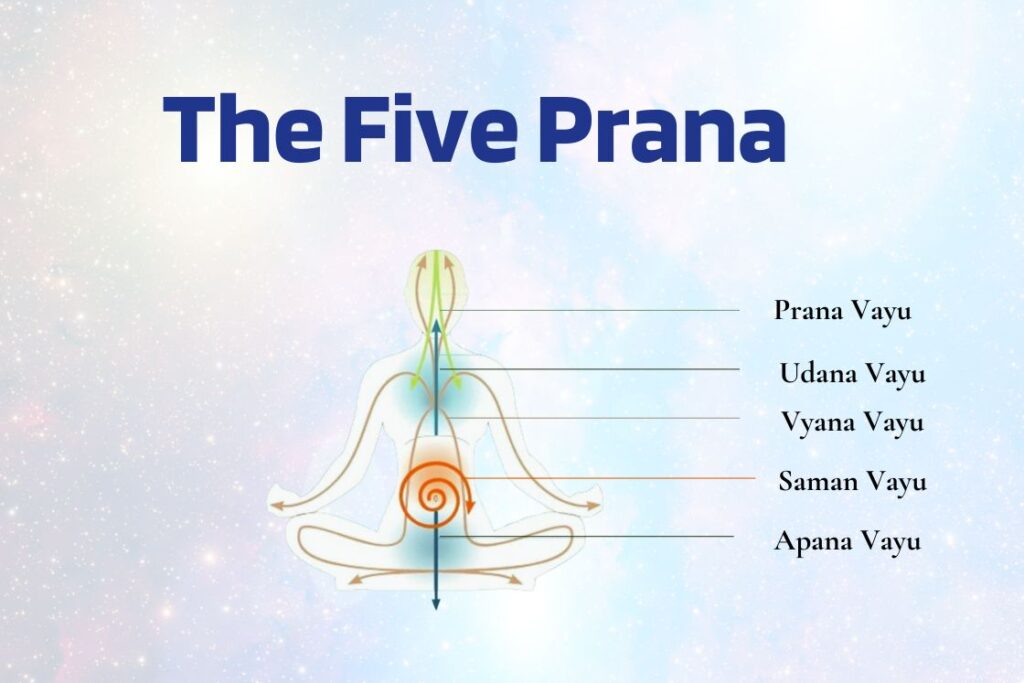Throat Lock (Jalandhara Bandha): Steps, Benefits & Precautions
Jalandhara Bandha, or the throat lock, is a traditional practice in Hatha Yoga where the chin is tucked toward the chest while holding the breath. This action lightly compresses the throat area, helping control the flow of energy (prana)...

 Image Source: Shutterstock
Image Source: ShutterstockJalandhara Bandha, or the throat lock, is a traditional practice in Hatha Yoga where the chin is tucked toward the chest while holding the breath. This action lightly compresses the throat area, helping control the flow of energy (prana) in the body.
The practice directly stimulates the throat and thyroid region, supports vocal strength, and enhances focus during pranayama. Often applied during breath retention or in poses like Shoulderstand, Jalandhara Bandha also activates the throat chakra (Vishuddha), which is linked to clear communication and internal balance.
Jalandhara bandha: chin or throat lock
Jalandhara Bandha is a yoga technique that controls and directs the flow of energy in the throat region. In this practice, the chin is gently brought down towards the chest, creating a powerful stretch in the spinal cord and influencing the brain. This bandha significantly impacts both the physical and subtle bodies.
While the throat lock is often practised on its own, when combined with the other two main bandhas, it forms Maha Bandha the great lock. Even if you haven’t practised Jalandhara Bandha consciously, you may have experienced it in yoga postures like Bridge Pose or Shoulder Stand.
What jalandhara actually means?
The Sanskrit term Jalandhara comes from two root words: Jala means “web” or “net,” and Dhara means “holding.” Bandha translates to “lock” or “bond.”
When combined, Jalandhara refers to “holding a net” or “creating a web.” It is called Jalandhara Bandha because, when the throat is locked by lowering the chin toward the chest, it forms a web-like structure that restricts the downward flow of breath.
Some yogis also believe that this bandha was introduced by the sage Jalandharipada, which is another reason for its name.
Purpose of jalandhara bandha
The main purpose of this bandha is to lock the energy flowing out through the throat for a moment. The energy within us flows out in the atmosphere naturally.
This Bandha locks the energy flowing out from the way of the throat for a while and stimulates it for better functioning of the whole throat region. This fixes all the sickness in the throat and also targets the Throat Chakra (Vishuddha Chakra).
How to do jalandhara bandha(throat lock)

You can easily perform Jalandhara Bandha while sitting in Sukhasana or Padmasana. The main requirement is to hold your breath and gently bend your head forward, bringing the chin to touch the upper part of the chest.
Step-by-Step Instructions
While sitting in any cross-legged posture, gently stretch your knees outward and place your hands on your knees. Now take a slow and deep breath, raise your chest up and hold the breath inside. This is Antara Kumbhaka (holding breath inside). Meanwhile, tilt your head forward and touch your chin with the jugular notch (notch between our collar bones) gently. Bring your awareness to your throat, and hold it there.At the point, you touch your chin to Jugular notch, you create a lock. If you are unable to bring your chin exactly at the jugular notch, try to bring it as close as possible to Jugular notch.
Hold this position as long as you can. When you can’t hold it further, then lift your chin gently and exhale slowly. Now, relax for a while & then repeat this whole process again.Every time you repeat, you will be activating the energy centre at the level of the throat.
Ones you have mastered it in Antara Kumbhaka (holding breath inside), you can go for holding the breath out after a complete exhalation (Bahya Kumbhika). The rest of the procedure will be the same. You just have to hold your breath after exhaling instead of inhalation.
Point to Note Down
Remember to keep your spine straight and verticle. Do not lean it forward or backward otherwise the flow of energies through the central channel of the spine will get disturbed. In the beginning, repeat this process 3-5 times in a single session. After some practice, you can increase it gradually and take it to 10-12 rounds. The best time to practice Jalandhara Bandha is the morning time, away from all the distractions. You can also add this to your daily yoga practice and perform it after Pranayama.Contradictions and precaution
To get the best results and to perform Jalandhara Bandha correctly, you need to take the following precautions.
Keep your spine straight throughout the whole process of Jalandhara Bandha. Do not go beyond your limits. Perform it according to your stamina. Patients of high blood pressure, or heart problems, should not practice Chin Lock at all. If you are having a fracture or any other problem in your neck or throat, you are not advised to perform this Bandha. When you feel dizziness or vertigo, stop this practice immediately and take some deep breath. When you get relaxed, you can continue again.Some common mistakes
Still not able to perform Jalandhara Bandha properly? Here are some common mistakes that don’t let us practice this bandha properly.
1. Position of the Chin
There may be some mistake with the position of chin. The chin should be left or right. Remember to bring it to the center so that your chin, nose and the breastbone comes in the same line.
2. Breathing Position
The most common mistake we do is in the breathing position. Remember, when you are inhaling, you have to keep your head up and spine straight. You have to do the same while you exhale. Do not exhale before lifting your chin up. At first, bring your chin up, keep the head straight, then exhale slowly.
3. Not Lifting the Chest
Many people do not lift their chest and as a result, they feel uncomfortable to perform this Bandha. Make sure to lift your chest, and then touch your chin to Jugular notch.
Painless tooth extraction by jalandhara Bandha yoga
In earlier days, there was no Anesthesia, to use before surgery, so the people carry out surgeries by using some yogic procedure and by manipulating some vital points in the body. In Ayurveda, there are many examples of surgeries done by Sushruta , without Anesthesia (an ancient Indian physician). One of such example is Painless Tooth Extraction by Jalandhara Bandha Yoga.
This Dental Surgery takes place in the following steps
Firstly, the patient sits on a wooden plank. After that, the Ayurvedic Dental Surgeon stands behind the patient and makes him do Jalandhara Bandha. Then, the Dental Surgeon puts pressure over the SushumnaNadi (Spinal Cord) with his left knee and puts pressure over the trigeminal nerve with his left hand. Lastly, Dental Surgeon moves the patient’s head up and down 2-3 times gently and then extracts teeth with his instrument (Lion Forceps).It is said that the Jalandhara Bandha blocks the path of pain during this surgery, thus the painless surgery is completed.
Now, let’s know, why people go for this surgery and what are its benefits.
Many patients have an allergy to local Anesthesia and medicines. This surgery treats them without any Anesthesia or another drug. High blood sugar patients usually have side effects after even a little surgery. As this surgery is an Ayurvedic surgery, it extracts teeth without any side effects. This surgery heals the gums faster and does no harm to healthy tissues. This surgery does not have any post complications like swelling, wound, etc. It is a powerful Dental Surgery that can extract the molar tooth and milk tooth, even the stamps also.Benefits of jalandhara bandha(throat lock)
Jalandhara Bandha, plays a key role in regulating vital functions within the body. By influencing the throat region, spine, and energy flow, this bandha offers specific therapeutic and energetic benefits that support vocal clarity, glandular balance, and mental focus.
Boosts Vocal Clarity: Jalandhara Bandha improves blood flow to the throat and vocal cords. This helps produce a clearer, more pleasant voice, which is useful for singers and public speakers. Balances Thyroid Function: This bandha stimulates the thyroid gland located in the neck. It supports healthy metabolism and may help prevent thyroid issues like hypothyroidism or hyperthyroidism. Improves Spinal Cord Circulation: By bending the head forward, the spine gets a gentle stretch. This improves blood circulation in the spinal region and keeps the nerves healthy. Sharpens Focus and Calms the Mind:The practice has a soothing effect on the brain. It helps improve concentration and reduces stress, anxiety, and anger. Activates Throat Chakra (Vishuddha Chakra): Jalandhara Bandha directs energy to the throat chakra, linked with communication and purification. This improves your ability to speak clearly and express thoughts with ease. Supports Parasympathetic Nervous System: It activates the part of the nervous system that manages digestion, urination, and relaxation. This supports better control over involuntary body functions. May Help Reduce Double Chin: Some believe that the chin lock tones neck muscles and reduces fat under the chin. While not proven, it may improve appearance over time with regular practice This practice massages the Throat region. This helps in better blood flow to our Vocal cord. Thus, this bandha helps in a clear and sweet voice, especially for singers. This bandha improves the metabolism function of the thyroid gland that prevents all the disorders of the thyroid gland (Hypo and Hyper Thyroid). Many believe that Jalandhar bandha helps to correct a double chin that aids in your looks. Still, it is not scientifically proven. This practice gently stretches the spinal cord. This helps in the blood circulation to the spinal cord. Thus, the health of the spinal cord improves gradually.Conclusion
Jalandhara Bandha is a simple yet powerful yogic practice that brings many benefits to the throat, spine, mind, and energy system. It helps improve voice, supports thyroid health, and calms the nervous system. With regular practice, it can also enhance mental clarity and support the body’s natural functions. Practising this bandha with awareness can strengthen both the physical and subtle aspects of your well-being.
Jalandhara Bandha(Throat Lock) FAQs
1. What is the ideal time and frequency to practice Jalandhara Bandha?
It’s best done in the morning on an empty stomach, after asanas and pranayama but before meditation. Beginners should start with 1–3 rounds of 5–10 seconds hold, gradually increasing over time.
2. How long should I hold Jalandhara Bandha?
Hold it for as long as is comfortable typically 5–15 seconds for beginners. As your pranayama practice deepens, you can extend this duration slowly.
3. Are there any safety precautions or contraindications?
Avoid it if you have a neck injury, cervical spine issues, high blood pressure, heart disease, glaucoma, respiratory conditions, or during pregnancy. If dizziness or discomfort arises, release the lock immediately.
4. Can Jalandhara Bandha be done after exhaling (bahir kumbhaka)?
Yes, it can be performed after both internal retention (breath held in) and external retention (breath held out), each with its own energetic benefits.
5. Should I prepare with specific asanas or pranayama?
Warm up the neck, shoulders, and upper back with Ujjayi pranayama and gentle stretches. Ujjayi breathing helps you learn throat control, making Jalandhara Bandha easier.
6. Can it be practiced within other yoga poses or active flows?
Yes. It can be briefly incorporated during poses like Shoulderstand, Plow, or Camel in static holds. In dynamic flow or asana, use it subtly to enhance spine alignment and energy flow, but only briefly.
7. What common mistakes should I avoid?
Avoid forcing the chin too hard lower the chin and lift the sternum equally. Don’t hold the breath too long or strain your neck. Always breathe again only after your head is upright.

 Fransebas
Fransebas 































